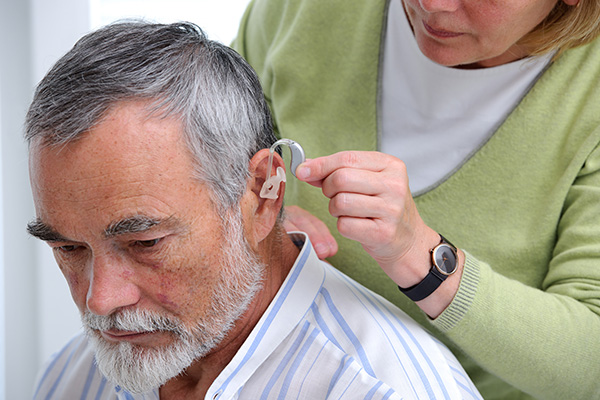How Does an Audiologist Conduct a Hearing Test?
A hearing test gives you the opportunity to determine whether you’re

Before your hearing aid can be of any use to you, it needs to be properly programmed. This process is about calibrating the hearing aid correctly so that it suits your needs and corrects the specificities of your hearing loss issues, allowing you to hear clearly. It’s a vital part of the process when you get a new hearing aid and older ones can be adjusted for improved performance over time too.
We’re going to look at what’s involved in programming a hearing aid so that you can understand the process better. This service is offered by audiologists after hearing aid selection and is important to ensuring you get the best listening experience possible from your device. Without the proper programming, your hearing aid won’t be fine-tuned or tailored for your specific needs.
The first thing to point out is that no two hearing aids are exactly the same as each other these days. That should tell you just how precise the programming of these hearing aids now is. They can be made specific to the user’s individual needs in a way that was never possible in the past.
They take into account the deficiencies and problems in a person’s hearing and make sure that those problems are compensated for correctly. There are many ways that this is achieved and the work all begins with the patient working closely alongside an audiologist who can help them.
Both noise and feedback can be reduced using complex algorithms, which is a new development in how this technology is used and applied. In the past, feedback issues were very common but thanks to new developments, this is not really the case any longer.
A surround sound system is used in order to simulate real noises and what it will be like for the user to make use of the hearing aid in a real-world scenario. In our daily lives, we find ourselves in situations where there are many different noises going on around us, and by simulating this, the hearing aids can be programmed to deal with that.
It’s a system that’s particularly good at simulating crowd noises, which are often difficult for people using hearing aids to deal with. The whole point of carrying out these simulations is to adjust the hearing aid device itself in order to meet the needs of the user.
Troubleshooting is a major part of this process too. Faults can be found and things can be changed so that the user experiences the use of their hearing aid in the real world in the way they should. It prevents problems from arising because it will all be programmed correctly from day one of real-world usage.
Live speech mapping is a way of charting how sounds reach and hit the eardrum before they process that sound. It’s an advanced and modern way for audiologists to understand how to program a patient’s hearing aid correctly and it’s replacing more traditional measurements nowadays.
It’s also used as a way of making it clear to the patient how the hearing aid will work and how it will improve their hearing going forward. It generally makes the whole experience of getting a new hearing aid more pleasant and easier to understand for the patient because they’ll be seeing the meaning of it all laid out in front of them.
There are so many different factors that can be tweaked and adjusted when it comes to programming a hearing aid. When working alongside a professional audiologist who knows what they’re doing, they’ll work on tweaking many different parts of the hearing device until the perfect outcome is attained for the user of the hearing aid device.
Some of the things that can be adjusted and tweaked include the sensitivity to improve the user’s comfort, the emphasis on background noises, frequency, intensity, noise reduction and compression ratios among many other factors. There is so much depth to the process of programming a hearing aid and it should be left to the professionals.
The process of programming a hearing aid should always be carried out by a professional audiologist who knows what they’re doing. You won’t achieve the right outcomes if you try to do it yourself and you probably won’t have the right equipment at your disposal either. Trust the audiologists at Tops Hearing & Balance Center to program your hearing aid by calling (281) 920-3911.

A hearing test gives you the opportunity to determine whether you’re

Do you find that you often have to ask for people to repeat what they are

Hearing loss is something that affects around 20% of the population of the